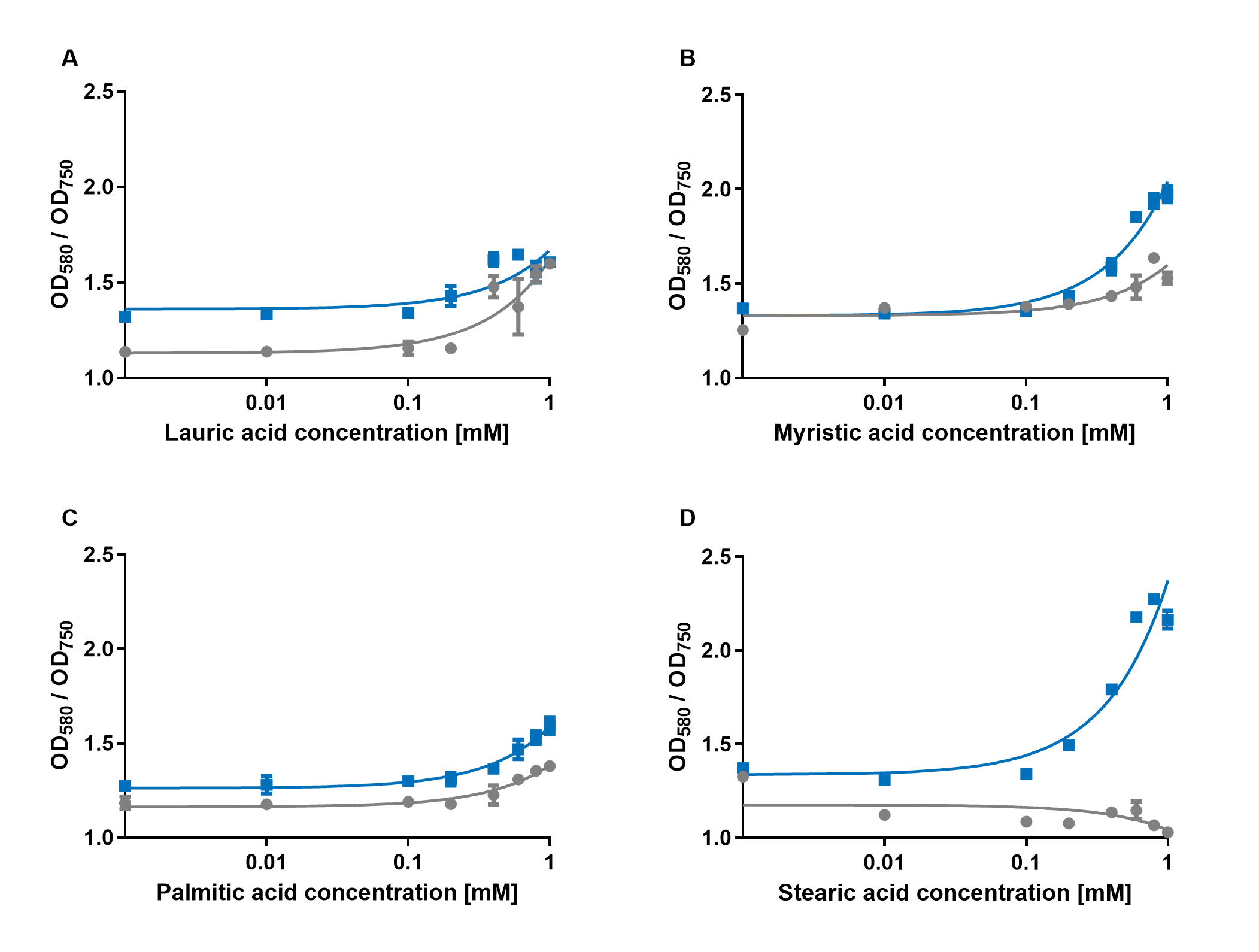Part:BBa_K2924020
Promoter AR with the chromoprotein amilCP
Long-chain fatty acid sensitive promoter PAR expressing amilCP. This part was used to characterize amilCP.
Usage and Biology
This year the iGEM team from Düsseldorf 2019 was working on the characterization of amilCP, a blue chromoprotein from the Acropora millepora (BBa_K592009) for the use as a reporter gene for a biosensor. For the characterization the synthetic PAR from a previous publication 1 was used and so the biosensor is sensitive for long chain fatty acids (LCFA). Different LCFA were used for the expression of the reporter gene amilCP in Escherichia coli. Sequence and Features BBa_K2924020
Sequence and Features
Characterization
Chromoproteins are a good alternative to fluorescent proteins like red fluorescent protein (RFP). The amilCP protein has an absorption maximum at 588 nm and the blue color can be seen with naked eye. Chromoproteins have the benefit that they can measured by absorption and thus can be used in every laboratory.
The experiments with the blue chromoprotein amilCP showed that the production of the chromoprotein is increased by a higher concentration of fatty acids in the medium. The best result was achieved with the fatty acid stearic acid. The biosensor also worked for the chain lengths from C14:0 and C16:0. The EVC is in thus experiments lower than the samples with amilCP. By adding lauric acid (C12:0) to the culture medium the production of amilCP increased, but the EVC also increased a lot and is close to amilCP, so it is not certain if this result can be used for an nearly distinct conclusion.
References
1: Fuzhong Zhang, James M Carothers, Jay D Keasling. “Design of a dynamic sensor-regulator system for production of chemicals and fuels derived from fatty acids” Nature Biotechnology volume 30, pages 354–359 (2012)
| None |


